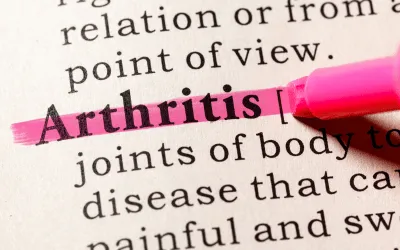About Arthritis
As the nation’s #1 cause of disability, arthritis affects nearly 60 million adults and 300,000 children. Over 100 types of arthritis and related conditions damage the joints and often other organs.
How can we assist you?
Helpful Tools for You

Unveiling the CURE Data Warehouse: A Game-Changer in Arthritis Research
When it comes to advancing arthritis treatments, the key to innovation lies in data. Recognizing this, the American Arthritis Foundation has launched the CURE Data Warehouse—a revolutionary platform designed to accelerate breakthroughs in regenerative medicine for both osteoarthritis and rheumatoid arthritis. This state-of-the-art data repository is more than just a database; it’s a catalyst for transforming patient care.
What is the CURE Data Warehouse?
The CURE Data Warehouse, short for Centralized Unit for Regenerative Evidence, is a cutting-edge data lake infrastructure built to collect, store, and analyze diverse datasets related to arthritis treatments. Unlike traditional databases, which are often rigid in their design, the CURE Data Warehouse uses a highly flexible data lake model, accommodating structured, semi-structured, and unstructured data. This allows researchers to work with a wide range of information, from clinical trial outcomes and imaging data to genomic analyses and patient-reported metrics.
Why Arthritis Research Needs CURE
Arthritis is a complex condition affecting millions worldwide. From the degenerative cartilage damage in osteoarthritis to the autoimmune-driven joint inflammation of rheumatoid arthritis, the challenges of treatment are vast and varied. While regenerative medicine offers exciting possibilities—such as using growth factors, stem cells, or novel biologics—progress depends on having access to large, well-organized datasets.
That’s where CURE comes in. By aggregating and analyzing data at an unprecedented scale, this platform can help:
Identify Patterns: Recognize how different patients respond to regenerative therapies, enabling more personalized care.
Accelerate Innovation: Provide researchers with the tools to explore new treatment protocols and refine existing ones.
Enhance Collaboration: Create a shared space for scientists, clinicians, and healthcare organizations to exchange insights.
How the CURE Data Warehouse Works
At its core, the CURE Data Warehouse is powered by advanced technology designed to handle the complexities of modern medical research.
Data Collection
The system ingests data from a variety of sources, including clinical trials, electronic health records, imaging systems, wearables, and even patient-reported outcomes.Data Organization
Using advanced tagging and structuring tools, the platform organizes this information while maintaining the flexibility to accommodate new data types.Analytics and AI Integration
With built-in machine learning and artificial intelligence, the CURE Data Warehouse can perform predictive modeling, pattern recognition, and hypothesis generation, giving researchers deeper insights faster than ever before.Secure Access
Fully HIPAA-compliant, the system ensures that patient data remains protected while allowing authorized researchers and clinicians to access the information they need.
Real-World Impact: What CURE Means for Patients
While the technical aspects of CURE are impressive, its ultimate value lies in its impact on patients. By enabling a deeper understanding of how regenerative therapies work, the platform can:
Help clinicians design more effective and personalized treatment plans.
Speed up the discovery of new therapies for arthritis.
Improve overall patient outcomes by translating data into actionable insights.
For example, imagine a patient with osteoarthritis who hasn’t responded to traditional treatments. Data from CURE could help their doctor pinpoint a regenerative therapy with a proven track record for similar cases, potentially giving that patient a path to pain relief and restored mobility.
How You Can Get Involved
The American Arthritis Foundation is calling on researchers, clinicians, and industry partners to contribute to the growth of the CURE Data Warehouse. Whether you’re conducting a clinical trial, analyzing patient outcomes, or developing new therapies, your insights could help shape the future of arthritis care.
Visit our CURE PAGE to learn more about how you can collaborate, or contact us at admin@americanarthritisfoundation.org. Together, we can transform arthritis treatment and improve lives.
The Future of Arthritis Research Starts Now
The CURE Data Warehouse is more than a repository—it’s a movement toward smarter, faster, and more effective solutions for arthritis. By combining cutting-edge technology with the collective power of the medical and scientific communities, CURE has the potential to revolutionize how we understand and treat arthritis.
Because when it comes to fighting arthritis, every piece of data brings us closer to a cure.

Effects of Arthritis

Cause of Disability
In the United States, 23% of all adults, or more than 54 million people, have arthritis. It is a leading cause of work disability, with annual costs for medical care and lost earnings of $303.5 billion.

Workforce Effects
Sixty percent of US adults with arthritis are of working age (18 to 64 years). Arthritis can limit the type of work they are able to do or keep them from working at all.

Global Impact
In fact, 8 million working-age adults report that their ability to work is limited because of their arthritis. For example, they may have a hard time climbing stairs or walking from a parking deck to their workplace.
Promoting Interventions That Reduce Arthritis Pain
American Arthritis Foundation recognizes several proven approaches to reduce arthritis symptoms:
Be active. Physical activity—such as walking, bicycling, and swimming—decreases arthritis pain and improves function, mood, and quality of life. Adults with arthritis should move more and sit less throughout the day. Getting at least 150 minutes of moderate-intensity physical activity each week is recommended.
Protect your joints. People can help prevent osteoarthritis by avoiding activities that are more likely to cause joint injuries.
Talk with a doctor. Recommendations from health care providers can motivate people to be physically active and join a self-management education program. Should your arthritis be interfering with your activities of daily living you may be a candidate to receive many new treatments, and learn how to reverse the arthritis condition.
Have a question?
We're Here to Help
By providing my phone number, I agree to receive text messages from the business.


